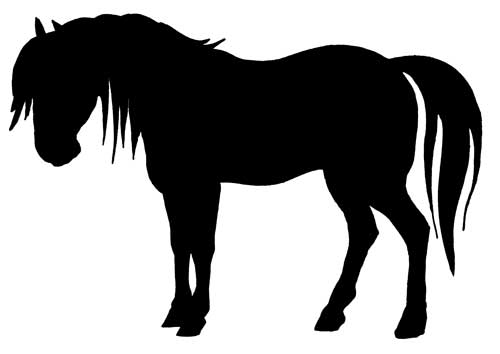Saturday, October 24, 2009
How useful are you?
I always carry matches with me, just in case, for some unknown reason the universe shoots me back in time. Who knows why it would happen, I just always thought that matches would be handy.
This quiz shows that on a technological level, I'd be almost useless. But still, I think common knowledge of a lot of things would do just as much, if not more, than technical knowledge.
Friday, October 23, 2009
Get on my horse
Thursday, October 22, 2009
Wednesday, October 21, 2009
Bar-none Best Blog
If you aren't reading that on a regular basis, you're missing out on what makes the internet mankind's greatest invention. Letters of Note pulls together correspondence from all over time and space and shares it with the entire world. Not only are these correspondences historically important, but they share with us the very human side of some of the most fascinating events in history.
If you want some quick amusement come back here. But if you really want to have your mind blown, check that site out.
Tuesday, October 20, 2009
Ahh, Fall.
By the way, root canals--suck. Avoid if at all possible. I'm not even joking, I was listening to my iPod on shuffle during the procedure and the first song to come on was Aretha Franklin's "Save Me." I almost bolted.
Anyways, on to blogging:
BoingBoing is doing a great series right now on the science of fall. This piece is about the leaves and this one is about the skies.

Saturday, October 10, 2009
Friday, October 9, 2009
Two Girls. Two Cups.
from Lulu and the Lampshades “You're Gonna Miss Me.”
Thursday, October 8, 2009
What I'm Listening To
Here's the video;
Here's a great review:
Eagle opens with a bait and switch. First there is a shrill crash of Chinese opera. This lasts for six seconds, long enough for us to take it in and prepare ourselves for more. Then the opera is interrupted by a newsreader’s voice, followed by the buzz of a dial swerving through different radio channels. Then there is something very different, the sound of folky plucked strings picking up their heels at a steady pace like good horses. We continue with the strings, men singing, guitar, dombra, a twang, a drone, boings from a mouth harp. The message the listener has been given runs like this: “This—this operatic crashing—is what you’ve been told traditional Chinese music sounds like. But it is not always like that. It can also sound like my dombra.”
The swerving radio device and the idea of switching from one style of music to another are hardly new.
The simplest way to tackle the obstacle is by writing a set of album notes. “This music,” the writer might explain, “comes from the nomadic people of such-and-such a place. Instruments need to be small and light so that they can be easily carried.” Then the reader will know not to wonder why the musician is not playing a piano, or a balafon, or anything else that is large and bulky. Eagle comes with a very short Mamer biography that serves as a quick introduction to the music as well as the musician: “[He] grew up in the furthest flung corner of Chinese central Asia, near China’s border with Russia and Kazakhstan… he learnt the instruments and songs of the area from his father and grandfather… a collection of songs that deal with universal grassland themes: the nature of man, the delicate balance of nature, and the temptations of modernity.” But the album would work without it.
Musical cues have been integrated into the songs themselves. In “Proverbs” the thrumming notes of Mamer’s singing have been furnished with sound effects, shuffles, and softness, and, near the end, a recording of two old men talking. There’s intimacy, possibly nostalgia, in this conversation. You don’t need to understand the language to come to a conclusion about the song. Maybe it’s one of those songs about “the nature of man”—or maybe the two men, talking about their youth and comparing it to the world around them today, are thinking of “the temptations of modernity”. Whatever it is, you get an idea of the song that is unlike the one you’d get if you were listening to it in its unmodified form, sung by an everyday person in “the furthest flung corner of Chinese central Asia”.
Mamer demystifies the experience and keeps the beauty of the sound. And Central Asian music is beautiful, with a beauty that can seem unearthly, the singer aching and transported into song. He has the faintly gurgled purring tone that you tend to hear in male singers from this part of the world, as if the lyrics are being somehow chanted by a huge cat. His dombra is companionable and folkish, avoiding the hard downward strokes that have jarred their way out of some of the other dombra recordings I’ve listened to. The dombra is an instrument on a supremely human scale: the sound is light, a fine tenor, and each note carries upwards, as if the instrument is turning its eyes to the sky and looking thoughtful. Mamer plays mouth harp as well, along with a few other instruments.
Ilchi, whose work should be familiar to anyone who picked up last year’s Introducing Hanggai, provides throat-singing. Both Eagle and the Hanggai album are being presented to us under the auspices of a new sub-genre called Chinese alt-country. Its appearance in the repertoire of British record labels seems to be the work of Robin Haller and Matteo Scumaci, two Britons working in Beijing, where these musicians are based. So far “Chinese alt-country” means Central Asian music clarified with modern touches. This is the same path that the Tuvan Albert Kuvezin pioneered with Yat-Kha, and that other bands with much less Western exposure have worked on in turn. The label seems likely to be misunderstood—surely at least one person is going to put on this album expecting to hear a Chinese singer making music in the American country style—but if it helps to coax people in, then I’m all for it.
Wednesday, October 7, 2009
Monday, October 5, 2009
A Wal-Mart Story:
Around the time that the young Sam Walton opened his first stores, John Kennedy redeemed a presidential campaign promise by persuading Congress to extend the minimum wage to retail workers, who had until then not been covered by the law. Congress granted an exclusion, however, to small businesses with annual sales beneath $1 million -- a figure that in 1965 it lowered to $250,000.
Walton was furious. The mechanization of agriculture had finally reached the backwaters of the Ozark Plateau, where he was opening one store after another. The men and women who had formerly worked on small farms suddenly found themselves redundant, and he could scoop them up for a song, as little as 50 cents an hour. Now the goddamn federal government was telling him he had to pay his workers the $1.15 hourly minimum. Walton's response was to divide up his stores into individual companies whose revenues did not exceed the $250,000 threshold. Eventually, though, a federal court ruled that this was simply a scheme to avoid paying the minimum wage, and he was ordered to pay his workers the accumulated sums he owed them, plus a double-time penalty thrown in for good measure.
Wal-Mart cut the checks, but Walton also summoned the employees at a major cluster of his stores to a meeting. "I'll fire anyone who cashes the check," he told them.
The Spoon Box
The Books, from Western Mass are amazing. I still listen to their albums all the time,years after JS introduced me to them lo those many years ago in the Pioneer Valley. I remember him opening up for their show at the Iron Horse, which to this day is still one of the best live shows I have ever seen.
BoingBoing got this explanation of the Spoon Box from them:
This will take a little bit of explaining. I built this prototype of the Spoonbox out of wood, plexiglass, zinc plates, measuring spoons, and closeout radioshack parts. It hooks up to a CD player and small amplifier which cause the spoons to dance. There are small speakers behind the spoons that move in response to the sounds on the CD which I carefully composed using low frequency sine waves and kitchen sounds. The speakers, in turn, blow small puffs of air into the spoons which cause them to bounce/vibrate in rhythmic patterns. It really must be seen to be understood, but this video might give you some sense of what it does.


Sunday, October 4, 2009
Birthday Present?

This copy is too much, but at $95 bucks this could be worth it.
Star Wars fans rejoice! The Jedi Dressing Gowns are here! What could be better on an evening than strutting around in your Jedi robe, making sure your little Lightsaber doesn't inadvertently pop out due to your lack of jimmy-jams? The Jedi Dressing Gown is made of soft 100% cotton velour and has a Jedi logo embroidered on the front. The bath robe's large hood, sash belt and wide sleeves are classic features of a Jedi robe. Will you be seduced by the dark side (your smelly old bathrobe with cat hair all over the back) or will you fight for justice...or at least the last Jaffa Cake...in a brand new Jedi Dressing Gown?
Saturday, October 3, 2009
Shatner of the Mount
Which is just brilliant. I don't think I agree with HW that their other video is better, but he is correct in saying this is inspired lunacy.
now this is impressive
An excerpt of a review for Good of The Boy Who Harnessed the Wind that was on BoingBoing:
William Kamkwamba’s parents couldn’t afford the $80 yearly tuition for their son’s school. The boy sneaked into the classroom anyway, dodging administrators for a few weeks until they caught him. Still emaciated from the recent deadly famine that had killed friends and neighbors, he went back to work on his family’s corn and tobacco farm in rural Malawi, Africa.With no hope of getting the funds to go back to school, William continued his education by teaching himself, borrowing books from the small library at the elementary school in his village. One day, when William was 14, he went to the library searching for an English-Chichewa dictionary to find out what the English word “grapes” meant, and came across a fifth-grade science book called Using Energy. Describing this moment in his autobiography, The Boy Who Harnessed the Wind (co-written with Bryan Mealer), William wrote, “The book has since changed my life.”
Using Energy described how windmills could be used to generate electricity. Only two percent of Malawians have electricity, and the service is notoriously unreliable. William decided an electric windmill was something he wanted to make. Illuminating his house and the other houses in his village would mean that people could read at night after work. A windmill to pump water would mean that they could grow two crops a year rather than one, grow vegetable gardens, and not have to spend two hours a day hauling water. “A windmill meant more than just power,” he wrote, “it was freedom.”
For an educated adult living in a developed nation, designing and building a wind turbine that generates electricity is something to be proud of. For a half-starved, uneducated boy living in a country plagued with drought, famine, poverty, disease, a cruelly corrupt government, crippling superstitions, and low expectations, it’s another thing altogether. It’s nothing short of monumental.
Friday, October 2, 2009
Tango

Baltimore-Washington Maglev

Via infrastructurist: Proponents of a link between these two cities see it as the core of a much longer corridor eventually linking Boston with Charlotte, dramatically speeding up commutes between the major cities of the East Coast. This 40-mile project was estimated in 2002 to cost about $4 billion to construct and would allow people to get from Union Station in Washington to downtown Baltimore in just 20 minutes.
With 27,000 estimated daily passengers, Baltimore sees this project as a catalyst for the revival of its urban core. BWI Airport’s attractiveness to the region’s travelers would expand once it is just 10 minutes from each city’s downtown. Amtrak, which already runs the popular and profitable Acela train on the corridor, taking just 30 minutes to complete the journey, likely doesn’t find this project very appealing.
Thursday, October 1, 2009
We know what's coming
This makes you wonder. If this is what At&T predicted in 1993 (!) you've got to wonder what they have planned for 2025...and moreover, if they already know is it technology that's holding us back, or a desire to increase profits along the road to the future?










